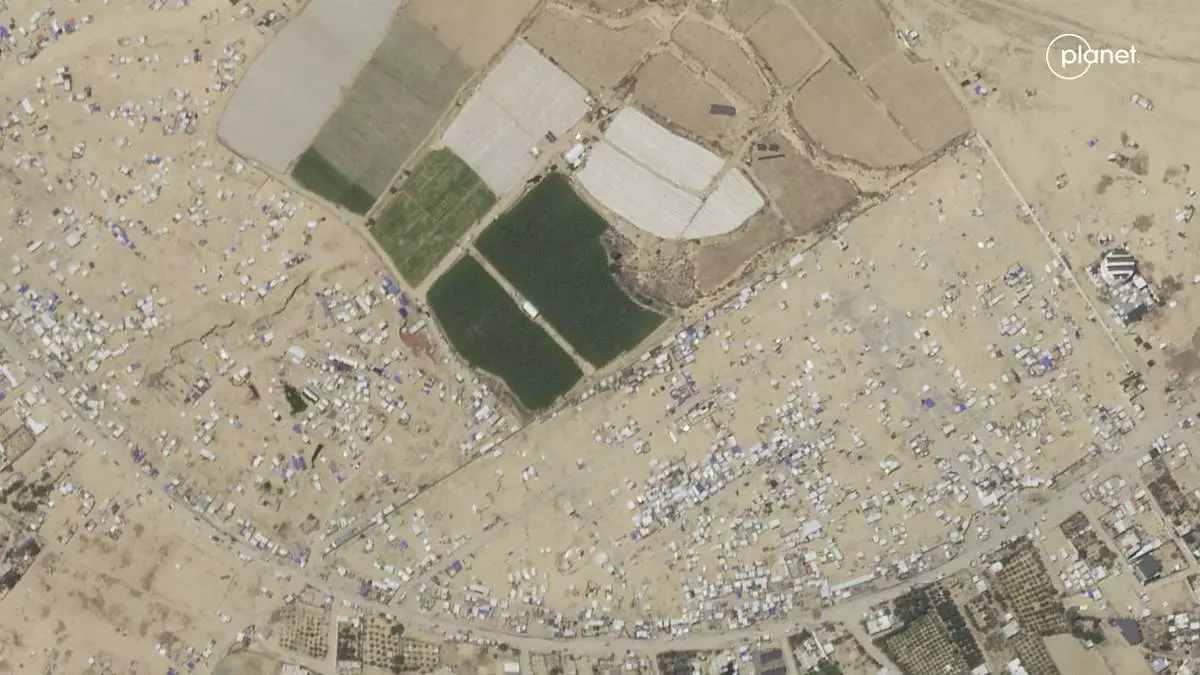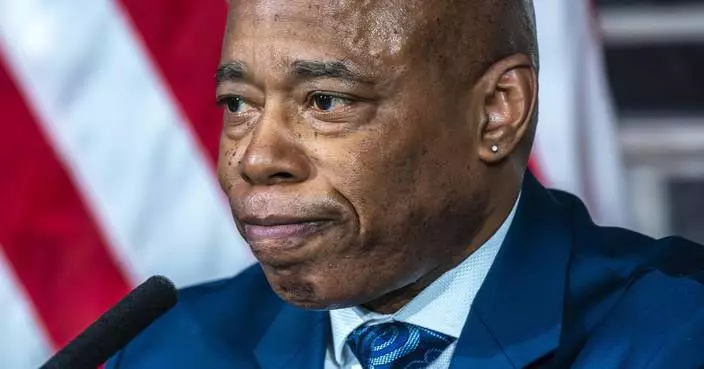A new generation can learn how to paint happy trees and to make happy accidents with a TV series teaching the Bob Ross -method of painting using some of the prolific artist's work that have never been seen before.
Before Ross died in 1995 from cancer, he had completed seven paintings to use in season 32 of “The Joy of Painting."
“He was so sick, but he was still working on his next series because he wanted to be able to keep going,” said Joan Kowalski, President of Bob Ross, Inc. Her parents, Annette and Walt Kowalski, co-founded the company with Ross.
Those works were stored away for almost three decades. Certified Bob Ross instructor Nicholas Hankins has studied those seven paintings and paints them from scratch on camera in “The Joy of Painting with Nicholas Hankins: Bob Ross’ Unfinished Season,” which started airing this spring in some markets on American Public Television. Some episodes are available on PBS' website.
The opportunity to “take these paintings and do what Bob ultimately wanted done with them, (to) have them out in the world making people happy is gratifying" said Hankins recently over Zoom. He teaches at the Bob Ross Art Workshop and Gallery about 15 miles from Daytona Beach, Florida, and oversees instructor certification. Hankins also uses six of his own paintings in this new “Joy of Painting," which was filmed and produced at WDSC-TV Daytona State College.
“I think that Bob would be incredibly proud of how we’re doing this,” said Kowalski. "There aren’t really many things that come our way where we have to wonder, what should we do? Bob was very specific in how he wanted this whole thing to go into the future.”
Hankins is a familiar face to Ross devotees. His own teaching videos posted to the Bob Ross YouTube channel drew upwards of 300,000 views before the idea of TV was ever mentioned.
Kowalski is fascinated by the online response to Hankin's videos. “People notice that Nick is not at all trying to be Bob, and he's delivering naturally as himself and yet there’s still that same sort of feeling you get watching Bob.”
A surge of interest in all things Bob Ross came out of the pandemic, when people were staying home and looking for ways to pass time. Now, with so many distractions, it can seem like there aren't enough hours in a day to unwind and rest. If viewers don't tune in for a painting lesson, Hankins hopes his 30-minute “Joy of Painting” episodes helps people to relax in the same spirit as the originals.
“I hope I can carry that part of the legacy on," he said. “I want to genuinely create an environment where people are going to come in, take half an hour and just turn off the world. Right now is a time we need it.”
Kowalski says people used to sheepishly tell Ross “all the time” that they would fall asleep to his episodes, but he didn't mind. “He said, ‘I love hearing that you’ve never watched a full episode of me.’”
If you want to paint along, Hankins said you need basic materials like oil colors, an easel, canvas, and brushes. “But if they’re just watching all they need is a tall glass of iced tea. ”That was Bob’s thing," he said, "get some iced tea and kick back and watch.”

Nicholas Hankins appears in the studio during a taping of "The Joy of Painting with Nicholas Hankins: Bob Ross' Unfinished Season." (Derek Sanford/WDSC-TV via AP)
JERUSALEM (AP) — Newly-released satellite photos reviewed by the Associated Press show a large exodus of Palestinians from the southernmost Gaza city of Rafah earlier this month ahead of a feared Israeli ground invasion there.
The photos taken three days apart — first on May 5 and then on May 8 — show the change on the ground after Israel issued its first evacuation order for the city on May 6.
They show that crowded tent camps in the central and northwest regions of the city grew sparse within days of the order.
One pair of before-and-after photos shows an area near the Tel al-Sultan refugee camp, one of the camps built for families displaced during the war surrounding the creation of Israel in 1948.
In the three days between the photos, at least half of the hundreds of tents cramming the area disappeared, likely from Palestinians packing up and departing.
The other pair of photos shows the central Ash Shabourah neighborhood of Rafah city. Tents packing city streets give way to sandy patches.
The departures come as Israel threatens a full-blown invasion of the city, which has stirred global alarm. Before the evacuation orders, some 1.3 million Palestinians — many already displaced from other parts of Gaza — had taken shelter there, according to the UN.
It was unclear where all the Palestinians packing up their tents and fleeing Rafah are going. Rights groups say there is nowhere in Gaza with nearly enough food, water or tents for the newly displaced masses. The zone where Israel has directed Palestinians is an already-packed area that residents say is little more than a squalid makeshift tent camp.
Israel's military told reporters Monday that 900,000 Palestinians had left Rafah. Scott Anderson, the director of UNRWA's operations in Gaza, said the figure was feasible, adding that the UN's Sunday count was 800,000.
Israel has so far classified its operations in the city as limited in scope, a claim the U.S. has echoed. But Omar Shakir, the Israel and Palestine Director for Human Rights Watch, said the mass displacement showed a different reality on the ground and called on the international community to stop Israel's threatened offensive.
“We have a situation today where hundreds of thousands of Palestinians have again been displaced from their homes, terrified, having no place to go,” he said.
Israel's military said Monday the war would likely last another six months. The statement came as ceasefire talks seemed frozen, with international mediators who had hoped to broker a deal between Israel and Hamas reportedly growing frustrated with the bitter enemies' intransigence.
The war began after the Hamas-led Oct. 7 attack that killed about 1,200 Israelis. Israel's Gaza offensive killed around 35,000 Palestinians, according to the Palestinian Health Ministry in Hamas-led Gaza, and displaced three-fourths of the strip's population.

This satellite photo taken by Planet Labs PBC shows an camp before its mass evacuation in Rafah, Gaza, May 5, 2024. (Planet Labs PBC via AP)

This satellite photo taken by Planet Labs PBC shows an evacuated camp in Rafah, Gaza, May 8, 2024. (Planet Labs PBC via AP)

This satellite photo taken by Planet Labs PBC shows an camp before its mass evacuation in Rafah, Gaza, May 5, 2024. (Planet Labs PBC via AP)

This satellite photo taken by Planet Labs PBC shows an evacuated camp in Rafah, Gaza, May 8, 2024. (Planet Labs PBC via AP)














